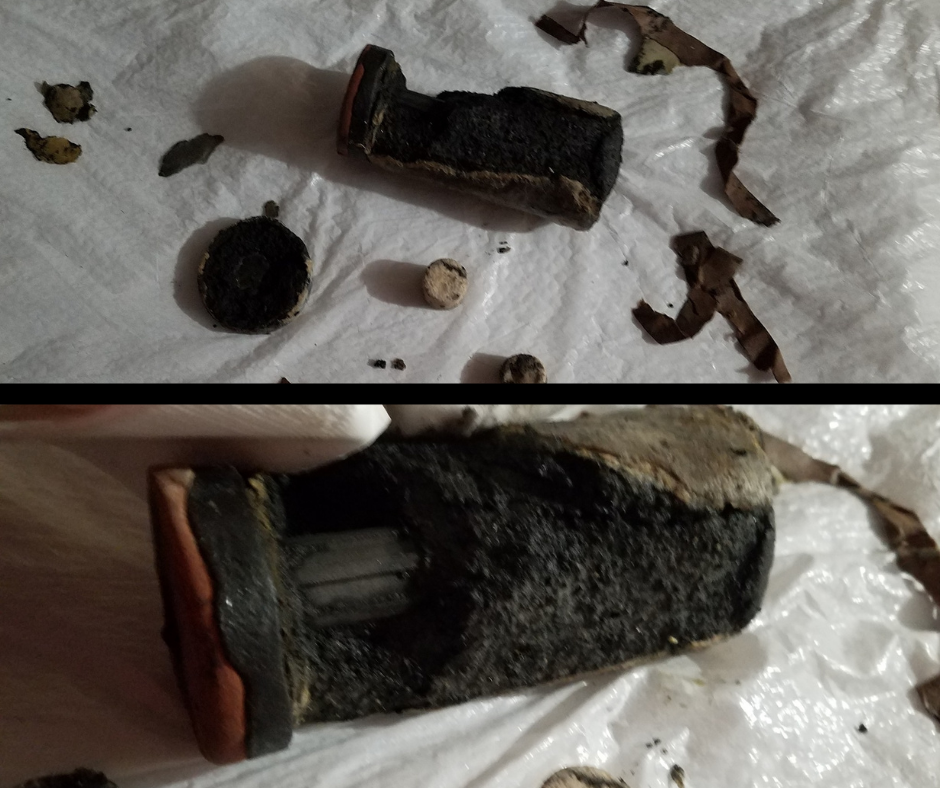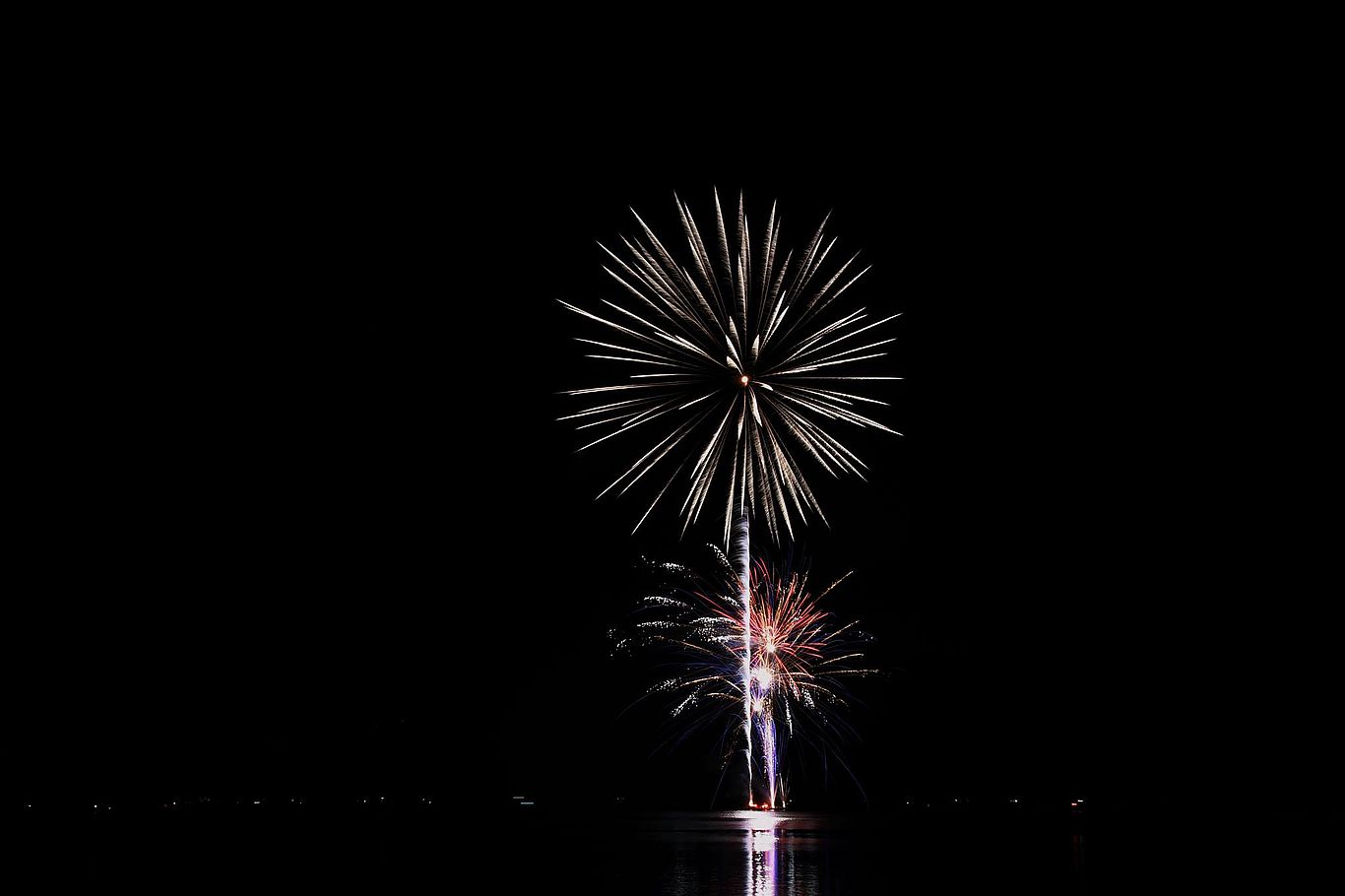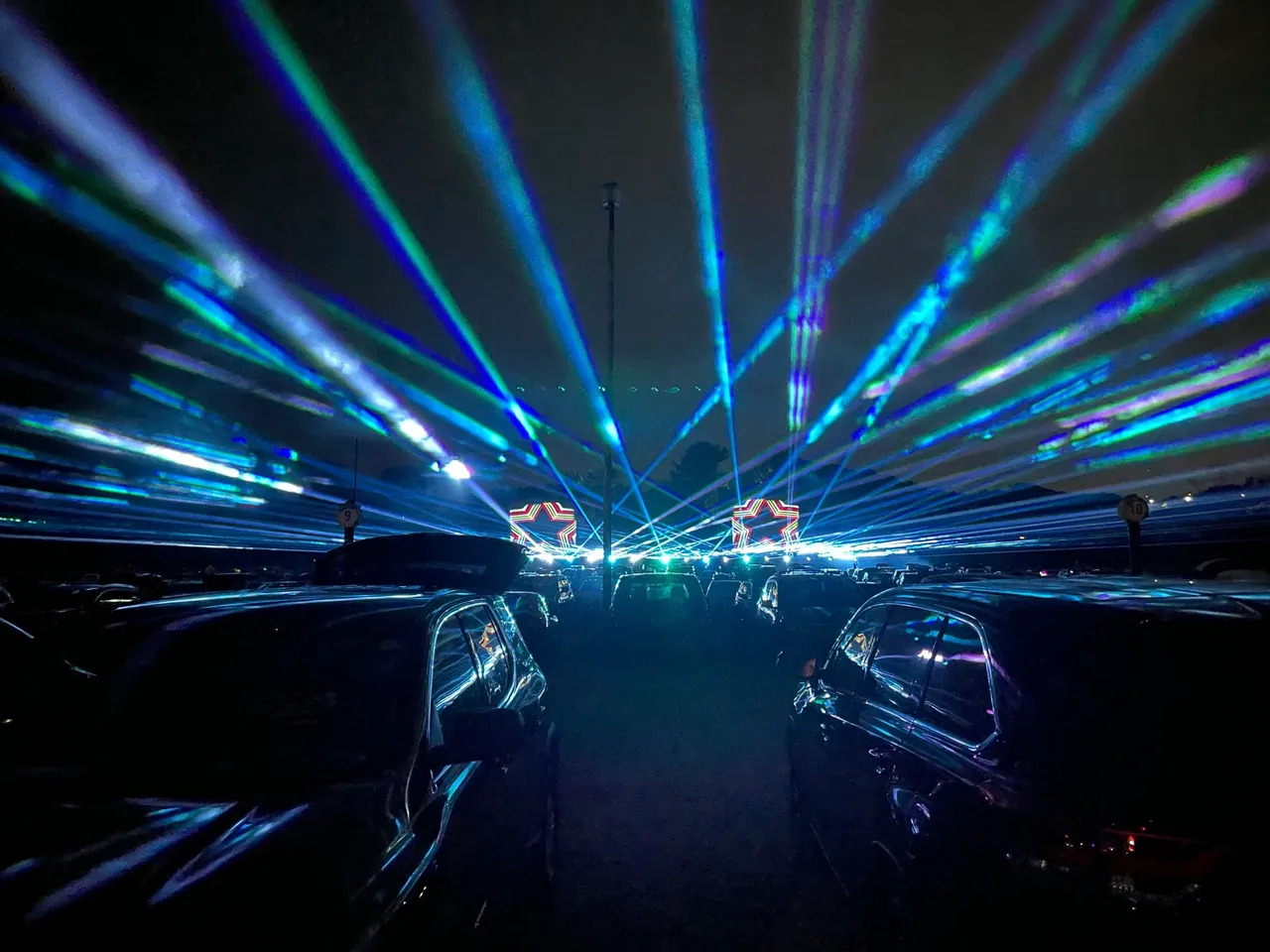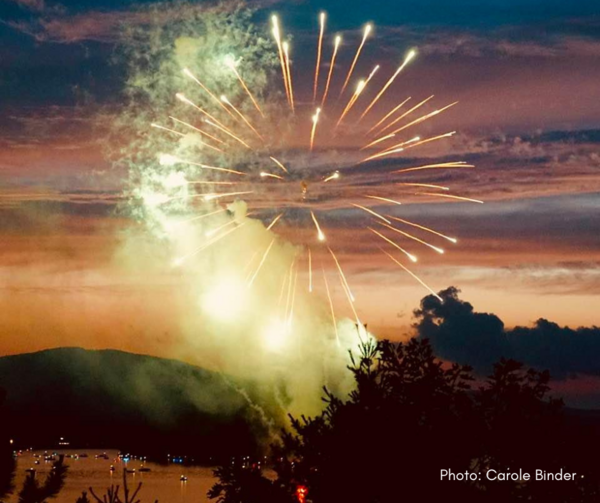Fireworks, Freedom, and Newfound Lake
Fireworks’ spectacular displays bring joy to many, especially on the Fourth of July. The first fireworks can be traced back to China, but more modern firework displays can be traced to Italy, where they migrated to the United States in the late 1800s, along with their Italian creators, via Ellis Island. In the last hundred or so years, fireworks have become an American tradition.
In recent years, awareness has grown around the negative effects of fireworks. Noise and light pollution from fireworks can be disruptive and even traumatic for people, pets, and wildlife. In 2010, some 5,000 birds in Beebe, Arkansas died after trying to escape the sound of fireworks and colliding with trees, cars, and buildings in the dark. Seabirds in northern California abandoned their nests after a fireworks show, and pet owners everywhere understand the risk to pets as they panic and flee. Fireworks can trigger panic attacks and other symptoms in people suffering from post traumatic stress disorder, which includes 83% of all US veterans, and other sensitive populations.

Fireworks also contain a cocktail of chemicals that pollute the environment with contaminants known to be harmful to humans and aquatic life, including heavy metals, the chemical compound perchlorate, and nutrients that contribute to unhealthy algal and plant growth. This can be especially concerning considering fireworks are often displayed over lakes for the best view, with contaminated debris and chemicals directly entering waterbodies. Over time, personal and commercial displays both contribute to pollution in our waterways.
When it comes to overall threats to the Newfound Watershed and our environment as a whole, it is important to keep fireworks in perspective. While there is no denying their potential for harm and pollution, they represent a fraction of the overall threat to the Newfound Watershed. Stormwater pollution remains the biggest threat to the lake, with invasive aquatic species and climate-related changes also major concerns. While stopping or decreasing your use of fireworks benefits the health of Newfound Lake, decreasing the amount of runoff from your property, picking up your pets’ waste, and decreasing your use of fertilizer can do even more to protect Newfound.

The key to enjoying fireworks while minimizing their harm to the Newfound Watershed is timing, location, and consideration. Here are some tips from the NH Department of Environmental Services:
- Be respectful of your neighbors and consider the timing and frequency of fireworks displays. Identify any local ordinances that pertain to fireworks. Some New Hampshire towns have special restrictions on fireworks. Check the Department of Safety’s list of community restrictions before using fireworks.
- Become knowledgeable of surrounding drinking water supplies and avoid using land near those supplies as launch areas.
- Devise a plan that minimizes potential runoff from launch areas, especially if fireworks are launched from bare soil or sand.
- Launch fireworks at a steep angle that promotes maximum height, allowing for complete ignition and combustion. Fireworks launched at a low trajectory may result in premature submersion in the water and incomplete burning of potentially hazardous compounds.
- Rake the launch area and clean up all debris immediately following a fireworks display. Retrieve any visible non-combusted materials from the water.
- Collect and dispose of all “duds” in accordance with manufacturer recommendations.
As our understanding of the effects of fireworks continues to evolve, classic American innovation is bringing solutions. Silent fireworks and laser light shows are a great example of how people are finding ways to continue an American tradition while better protecting the natural resources we love.

